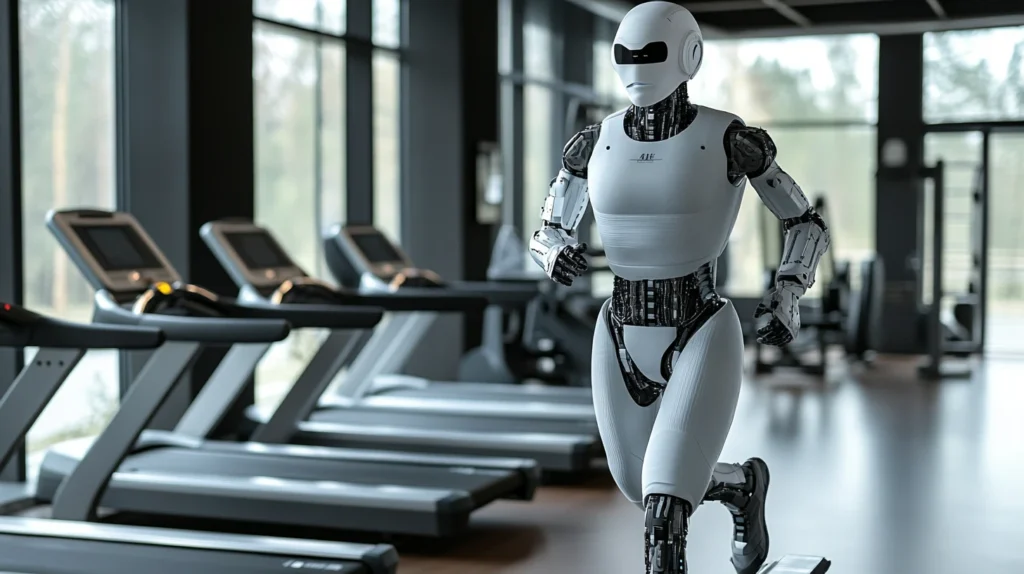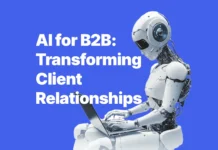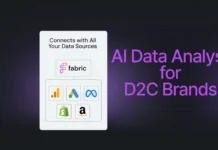As a busy professional, I’m always on the lookout for ways to streamline my workflow and boost productivity. That’s why I’ve been exploring AI productivity tools lately, and I’ve got to say they’re game-changers. From automating mundane tasks to providing intelligent insights, these tools are revolutionizing how we work.

AI productivity tools can significantly optimize workflows by automating repetitive tasks, enhancing decision-making processes, and providing data-driven insights. I’ve found that incorporating AI into my daily routine has freed up valuable time for more creative and strategic thinking. It’s like having a super-smart assistant who never sleeps and is always ready to help.
But with so many options out there, it can be overwhelming to know where to start. That’s why I’ve decided to share my experiences and insights on the most effective AI productivity tools I’ve encountered. Whether you’re a freelancer, small business owner, or part of a large corporation, I believe there’s something here for everyone looking to boost their efficiency and effectiveness.
Key Takeaways
- AI productivity tools automate tasks and provide intelligent insights to optimize workflows.
- These tools cover various areas including project management, content creation, and data analysis.
- Integrating AI with existing platforms can lead to significant improvements in efficiency and decision-making.
Exploring AI Productivity Tools

AI productivity tools are revolutionizing how we work. These innovative solutions leverage cutting-edge technology to streamline tasks and boost efficiency in ways I never thought possible.
Defining AI Productivity Tools
AI productivity tools are software applications that use artificial intelligence to automate and optimize various aspects of work. These tools often incorporate machine learning, natural language processing, and generative AI to tackle complex tasks.
I’ve found ChatGPT to be an incredibly versatile AI assistant. It helps me brainstorm ideas, draft content, and even debug code snippets. Other AI tools I rely on include:
- Time tracking apps that use AI to categorize tasks automatically
- Smart email filters that prioritize messages based on content and sender
- AI-powered project management platforms that suggest optimal task allocations
The beauty of these tools is their ability to learn and adapt. They get smarter the more you use them, continuously fine-tuning their algorithms to better serve your needs.
Benefits of Integrating AI into Your Workflow
Integrating AI into my workflow has been a game-changer. The most immediate benefit I noticed was the sheer amount of time saved on repetitive tasks. AI automation handles mundane activities like scheduling and data entry, freeing me up to focus on more creative and strategic work.
AI tools also provide data-driven insights that have helped me make better decisions. For example, my AI-powered analytics tool spotted a trend in customer behavior that I had completely missed, leading to a successful product pivot.
Another major advantage is increased accuracy. AI doesn’t get tired or distracted, ensuring consistent quality in tasks like proofreading or data analysis. I’ve seen a significant reduction in errors since incorporating AI into my quality control processes.
AI Tools for Task & Project Management

AI-powered tools are revolutionizing how we manage tasks and projects. I’ve found these technologies to be game-changers, seamlessly integrating into workflows and boosting productivity in ways I never thought possible.
Task Management Enhanced by AI
AI task management tools have transformed my daily routine. Todoist has become my go-to app, using AI to prioritize my to-do list based on urgency and importance. It’s like having a personal assistant who knows exactly what I need to focus on.
ClickUp’s AI features have been a lifesaver for me. The platform suggests task deadlines and estimates completion times with impressive accuracy. I’ve noticed a significant improvement in my time management since I started using it.
Reclaim has been a pleasant surprise. Its AI scheduling capabilities have freed up hours in my week by intelligently blocking time for tasks and meetings. It’s almost eerie how well it understands my work patterns!
Project Management Solutions
AI-driven project management tools have streamlined my team’s collaboration. Asana’s AI features have been particularly helpful in automating routine tasks and predicting potential bottlenecks. It’s like having a crystal ball for project planning!
I’ve been impressed by Taskade’s AI-powered brainstorming and ideation tools. They’ve sparked creativity in our team meetings and helped us tackle complex problems more efficiently. It’s amazing how AI can enhance human creativity.
AI integration in project management has significantly improved our decision-making process. These tools analyze vast amounts of data to provide actionable insights, helping me make more informed choices. It’s like having a data scientist on call 24/7!
AI in Content Creation and Idea Generation

AI tools are revolutionizing how we create content and generate ideas. They’re enhancing creativity, streamlining workflows, and opening up new possibilities for content strategies. Let’s explore how AI is transforming these areas.
Enhancing Creativity with AI
I’ve found that AI writing tools like Jasper AI can be a game-changer for overcoming writer’s block. They offer suggestions and help develop ideas, acting as a creative partner. I once used an AI tool to brainstorm blog topics, and it generated a list of unique angles I hadn’t considered.
Image generation tools like Midjourney are also pushing the boundaries of visual creativity. I’ve seen designers use these to quickly mock up concepts that would have taken hours to create manually.
Key features of creativity-enhancing AI:
- Idea prompts
- Style suggestions
- Visual concept generation
- Language refinement
Generative AI for Content Strategies
Generative AI is transforming how we approach content strategies. I’ve used AI to optimize workflows for content creation, from ideation to distribution. It’s particularly useful for social media posts, where AI can suggest trending topics and optimal posting times.
Chatbots and conversational AI are becoming integral to content strategies. They can engage audiences 24/7, gathering insights that inform future content decisions. I once implemented a chatbot that increased our website’s engagement by 30%.
AI copywriting tools have streamlined my process for creating:
- Ad copy
- Email subject lines
- Product descriptions
Tools like Descript are revolutionizing video content creation. I’ve used it to edit podcasts, and it’s cut my production time in half.
Optimizing Scheduling and Communication

AI-powered tools have revolutionized how I manage my time and collaborate with others. These innovations streamline scheduling, enhance meeting productivity, and improve overall communication efficiency.
AI for Scheduling Efficiency
I’ve found that AI scheduling assistants are game-changers for busy professionals. Motion, for example, uses intelligent algorithms to optimize my calendar. It automatically allocates time for tasks, considering my preferences and deadlines.
Clockwise is another tool I love. It analyzes my schedule and suggests the best times for meetings, protecting my focus time. Its user-friendly interface makes it a breeze to use.
For email management, AI has been a lifesaver. Smart filters and automated responses help me tackle my inbox more efficiently. I can prioritize important messages and schedule follow-ups without getting overwhelmed.
Smart Meeting Assistants and Note-Taking
Zoom’s AI features have transformed my virtual meetings. Real-time transcription and automatic meeting summaries save me hours of manual note-taking.
I’m also a big fan of Otter.ai. It not only transcribes my meetings but also generates action items and highlights key discussion points. The searchable transcripts make it easy to revisit important information later.
Fireflies is another tool I use regularly. Its AI can join my calls, take notes, and even create tasks based on the conversation. The audio transcription is incredibly accurate, making it perfect for recording interviews or brainstorming sessions.
These tools have significantly improved my productivity and communication. I can focus on the content of meetings rather than frantically scribbling notes. Plus, the AI-generated summaries ensure I never miss crucial details.
Productivity Suites and Collaboration Platforms

I’ve found that modern productivity suites and collaboration platforms have revolutionized how teams work together. These tools combine essential features to streamline workflows and enhance communication, making it easier for us to stay organized and productive.
Comprehensive Productivity Suites
When I think about comprehensive productivity suites, Microsoft 365 immediately comes to mind. It’s like having a Swiss Army knife for work – everything I need in one place. I can write reports in Word, crunch numbers in Excel, and create presentations in PowerPoint. The best part? I can seamlessly switch between devices without losing my work.
Another suite I’ve grown fond of is Notion. It’s incredibly flexible, allowing me to create customizable templates for various projects. I once used it to plan a company retreat, and the team was impressed by how easy it was to collaborate on ideas and schedules.
Collaboration Platforms and Features
When it comes to team collaboration, Slack has been a game-changer for me. It’s like a virtual office where I can chat with colleagues, share files, and integrate other tools we use daily. The ability to create channels for different projects helps keep conversations organized and searchable.
For visual collaboration, I’ve recently started using Tome. It’s perfect for brainstorming sessions and presenting ideas. The AI-powered features help me create engaging content quickly, which has been a real time-saver.
These platforms often offer features like real-time editing, version control, and integration with other productivity apps. I’ve found that this level of connectivity greatly reduces the time spent switching between tools and searching for information.
Streamlining Workflow with Automation Tools

I’ve found that leveraging automation tools can dramatically boost productivity and reduce tedious manual work. Let’s explore some game-changing solutions that have transformed my daily routine.
Automating Repetitive Tasks
Zapier has been a revelation for me. This powerful platform connects over 5,000 apps, allowing me to create custom workflows called “Zaps”. For instance, I’ve set up a Zap that automatically adds new Trello cards to my Google Calendar. This saves me countless minutes each day.
Gamma is another tool I can’t live without. It uses AI to generate presentations, reports, and other documents. I simply input my ideas, and Gamma does the heavy lifting. The time I save on formatting and design is incredible.
For more specialized automation, I turn to Mem. This AI-powered note-taking app helps me organize thoughts and automatically links related ideas. It’s like having a personal assistant for my brain!
Email and Communication Automation
Email management used to eat up hours of my day until I discovered MailButler. This nifty tool for Apple Mail adds features like email scheduling, tracking, and templates. I particularly love the “Undo Send” feature – it’s saved me from embarrassment more than once!
SaneBox is another email lifesaver. It uses AI to prioritize my inbox, moving less important emails to separate folders. I’ve seen a significant reduction in email-related stress since I started using it.
For customer service teams, EmailTree AI is a game-changer. It can automatically categorize, prioritize, and even respond to emails. While I don’t use it personally, I’ve heard rave reviews from colleagues in support roles.
Machine Learning & AI for Data Analysis

AI and machine learning are revolutionizing data analysis, offering powerful tools to extract insights and make predictions. I’ve seen firsthand how these technologies can transform businesses and streamline decision-making processes.
AI Tools for Data Analysis
I’ve found that AI-powered data analysis tools can process vast amounts of information in record time. GitHub Copilot, for instance, has been a game-changer for me when writing data analysis scripts. It’s like having a brilliant coding partner who never gets tired!
These tools excel at pattern recognition and can uncover hidden trends that human analysts might miss. I once used an AI tool to analyze customer feedback, and it identified a subtle product issue that had been overlooked for months.
But it’s not all roses. I’ve learned to be cautious about potential bias in AI algorithms. It’s crucial to regularly audit these tools to ensure they’re not perpetuating unfair practices.
Predictive Analytics for Business Insight
Predictive analytics has become my secret weapon for making data-driven decisions. By leveraging historical data, these tools can forecast future trends with impressive accuracy.
I remember using a predictive model to optimize inventory levels for a retail client. The results were astounding – we reduced overstock by 30% while maintaining customer satisfaction.
Machine learning algorithms can adapt and improve over time, making predictions more accurate as they process more data. It’s like having a crystal ball that gets clearer with each use!
However, I always remind my clients that these predictions are probabilities, not certainties. It’s important to combine AI insights with human judgment for the best results.
Integrating AI with Existing Platforms

AI integration enhances productivity by seamlessly blending with tools we already use. I’ve found this approach particularly effective in boosting efficiency without overhauling entire workflows.
AI Plugins and Extensions
I’ve discovered that AI plugins and extensions are game-changers for existing platforms. Take GitHub Copilot, for instance. It’s like having a coding buddy right in my IDE, suggesting snippets and completing functions as I type.
ChatGPT plugins have also revolutionized my workflow. I can now interact with various services directly through the chat interface. It’s amazing how I can draft emails, analyze data, or even book travel without leaving the conversation.
For social media management, I’ve found AI extensions for tools like Buffer invaluable. They help me generate post ideas and even suggest optimal posting times based on audience engagement patterns.
Enhancing Current Apps with AI Features
I’ve noticed a trend of popular apps incorporating AI features to supercharge their functionality. Zapier, my go-to automation tool, now uses AI to suggest workflow improvements and even create entire Zaps based on natural language descriptions.
Decktopus, a presentation tool I frequently use, has integrated AI to help with content creation and design suggestions. It’s like having a personal designer and copywriter at my fingertips!
Compatibility is key in this integration process. I’ve been impressed by how smoothly these AI enhancements work with existing features. It’s not about replacing what works, but augmenting it intelligently.
The Future of AI Productivity Tools

AI productivity tools are poised for remarkable advancements. I foresee transformative innovations that will reshape how we work, while ethical considerations will guide their responsible development.
Trends and Innovations in AI
I’m excited about the future of AI productivity tools. Machine learning algorithms will become more sophisticated, enabling tools to learn and adapt to our unique work styles. Imagine an AI assistant that anticipates my needs before I even realize them!
Generative AI will revolutionize content creation. I’ll be able to produce high-quality reports, presentations, and creative works in a fraction of the time. It’s like having a tireless collaborator by my side.
Conversational AI will make interacting with productivity tools feel natural and intuitive. I’ll chat with my AI assistant as easily as I do with a human colleague. No more fumbling through complex interfaces!
Ethical Considerations and AI Evolution
As AI tools evolve, we must prioritize ethical development. I’m particularly concerned about bias in AI decision-making. It’s crucial that these tools are trained on diverse datasets to avoid perpetuating existing inequalities.
Transparency will be key. I want to understand how AI tools arrive at their recommendations. This will help build trust and allow for human oversight.
Privacy and data security can’t be overlooked. As AI tools handle more sensitive information, robust protections must be in place. I don’t want my personal or professional data falling into the wrong hands!
Striking a balance between AI assistance and human agency will be an ongoing challenge. While I love the efficiency AI brings, I also value my autonomy and creativity. The best AI tools will augment rather than replace human capabilities.
Frequently Asked Questions

AI productivity tools offer exciting possibilities for optimizing workflows, but they can also raise questions. I’ve compiled answers to some common queries to help you navigate this landscape.
What are the key features to look for in an AI productivity tool?
When I’m evaluating AI productivity tools, I always check for intuitive interfaces and seamless integration with existing systems. I’ve found that robust automation capabilities and customizable workflows are crucial. Natural language processing is another game-changer, allowing me to interact with the tool more naturally.
How do AI tools contribute to time management and efficient task handling?
AI tools have revolutionized my approach to time management. They excel at automating repetitive tasks, freeing up my schedule for more strategic work. I love how they can prioritize tasks and suggest optimal scheduling, adapting to my work patterns over time.
Which are the top recommended AI tools for enhancing business productivity?
In my experience, Trello with AI capabilities has been fantastic for project management. For writing and editing, I swear by Grammarly. When it comes to data analysis, I’ve found that Tableau with its AI features is unparalleled. These tools have significantly boosted my productivity.
In what ways do AI tools for students differ from those designed for professionals?
AI tools for students often focus on research assistance and study planning. As a former student, I remember wishing for something like Wolfram Alpha to help with complex calculations. Professional tools, on the other hand, tend to emphasize business processes and enterprise-level workflows.
Can you suggest some free AI productivity tools that are effective for office work?
Absolutely! I’ve had great success with Google’s Smart Compose for email drafting. Otter.ai has been a lifesaver for transcribing meetings. For task management, I often recommend Todoist, which has some AI features in its free version.
What are the potential pitfalls to avoid when integrating AI tools into an existing workflow?
One mistake I made early on was relying too heavily on AI without proper oversight. It’s crucial to maintain a balance and not lose the human touch. I’ve also learned the importance of data privacy and security when using AI tools. Regular training for team members is essential to ensure everyone can leverage these tools effectively.




























